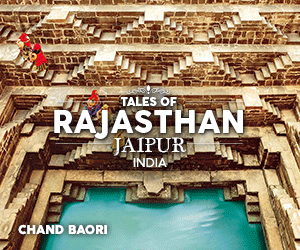Wah. We’ve discovered an amazing Instagram paradise, and it’s only RM250 away!?
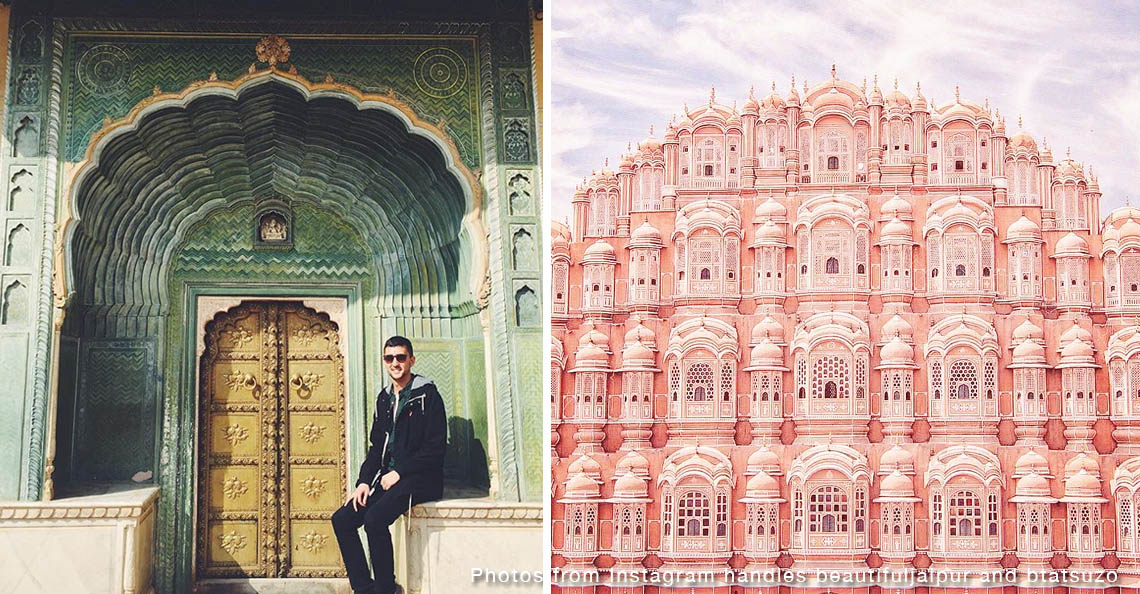
- 3.8KShares
- Facebook3.7K
- Twitter7
- LinkedIn17
- Email28
- WhatsApp115
These days, traveling isn’t just about visiting new places and expanding your pengetahuan am. It’s also about telling stories through your kicik mayum phone camera lens and sharing it with the world… while previous generations messed around with Kodaks and Polaroids, the weapon of choice for the modern generation is – Instagram.
And oh boy, have we stumbled upon a real – Instagem (kekekekeke). It’s never been used in a major Hollywood picture before, and most of you probably have never even seen pictures of it. But we really aren’t stretching it to say that that it’s one of the most beautiful cities we’ve EVER seen. Its buildings are the background of future Wes Anderson movies, it sets a few world records, AND it’s got… a thing for rodents.
And there’s one more selling point too.
Behold, Jaipur – the Pink City of India. And you won’t believe how cheap it is to get there
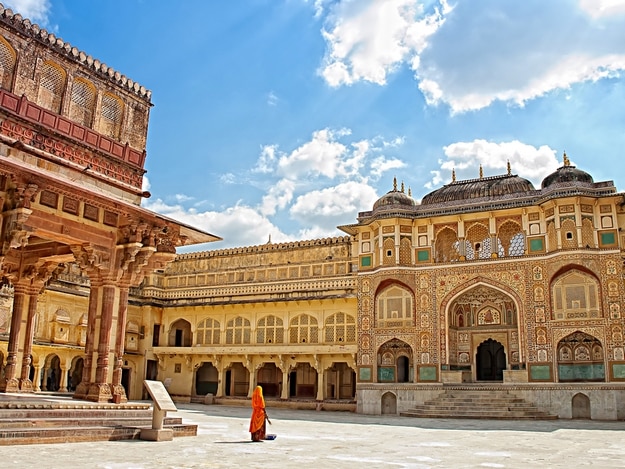
If you’ve never Googled it up, chances are you’d think of spice and carpets or maybe a Pussycat Doll song, but that’s Jai Ho (pfft! ‘Ho’). But Jaipur is among the earliest planned cities in India, and the ancient buildings and monuments that can be found here make for great photos.
Although one might imagine all the buildings to be a bright neon pink, the prevalent color is a faded terracotta pink. The reason most buildings in Jaipur is this hue happened in 1876, when Prince Albert of Wales and Queen Victoria was on a tour around India.
To impress them, the Maharaja of Jaipur at that time, Sawai Ram Singh II ordered for every building in Jaipur to be painted terracotta pink, as historically it’s a color of welcoming and hospitality. But the reason that the buildings stayed that same color to this very day was that Ram Singh II’s favorite wife adored the color so much, she convinced the Maharaja to pass a law the very next year that made it illegal for buildings in some parts of the state to be painted any other color.
To get to Jaipur, in the olden days you’ll have to take a plane from KL to Delhi or Mumbai (about five hours), then take either a domestic flight or trains for the last leg of the journey. But that’s the old way, as our friends at AirAsia X are now offering a direct air route to Jaipur, so no more changing planes to get there.
As a promotion of the new route, they are offering all-in fares costing between RM249 for an economy seat and RM699 for a Premium Flatbed seat for all flights to and from Jaipur between the 5th February to 30th June 2018. (But hurry, the promotion ends 31st December 2017!)
So affordable, but is it worth flying all the way to Jaipur? For starters…
1. There’s a group of doors that represent the four seasons
[ingcode id=BEeFoHtOz65]
That up there is one of four gates, collectively known as the Ridhi Sidhi Pol, named after the two consorts of Lord Ganesha, Ridhi and Sidhi. Each of the four gates are decorated with a seasonal theme. No, not monsoon, durian, tax and election. More like summer, winter, autumn and fall.
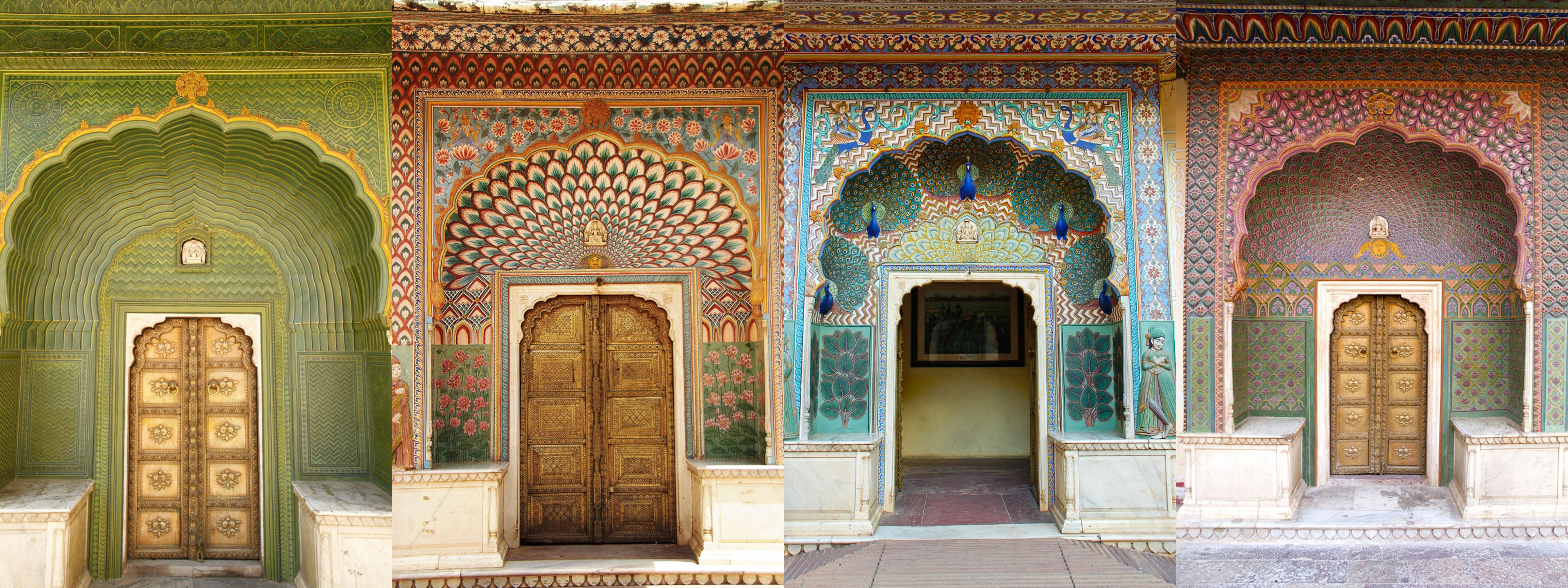
These gates can be found in the City Palace of Jaipur, which is a complex of different palaces in one place that also includes the Hawa Mahal from earlier. Moving on from pretty doors…
2. There’s a stairway to heaven, and it’s also the biggest stone sundial in the world
Here’s a post of some stairs going up to the heavens:
[ingcode id=BSb9SZbAJLC]
The newer generation might not heard of sundials, but people in the past tell time using them. While we do have a sundial at the Planetarium Negara, the scale is a bit different here. There’a a triangular thing (called a gnomon) on sundials, and you can tell the time of the day based on the position of the shadow that changes as the day goes on. And the staircase in the above post is actually the gnomon. Can you imagine how huge this thing must be?
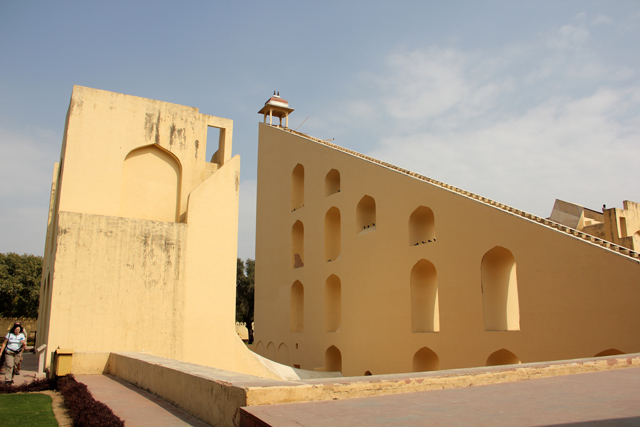
While there are five Jantar Mantar monuments dedicated to measuring the heavens all through India, the one in Jaipur is the biggest, holding 19 gigantic astronomical equipment within its premises. The equipment do various things, like forecasting sunrise and sunset times, finding the location of the Pole star in respect to other celestial bodies, and telling the local time for four other locations (UK, Switzerland, Japan and the Pacific), among other things. This observatory was completed… in 1734!
As for why everything is so huge, it was believed at the time of the construction that bigger equipment meant greater accuracy, and the Vrihat Samrat Yantra kind of proved it, as it can tell time accurate to two seconds. Seriously. You can watch the staircase’s shadow move at about 1 mm per second. Due to its design, preservation and preciseness of its measurements, Jaipur’s Jantar Mantar was declared a UNESCO World Heritage Site. If you would rather not climb up those stairs, there’s a place where you can go down some stairs instead.
3. There’s a stepwell with eight levels of symmetrical stairs
[ingcode id=-JllK3heKE]
Near Fort Amer in Jaipur, there’s a stepwell that looks great from any angle. While the Insta post above showcased the stairs, you’d have to look at the whole thing to truly appreciate its beauty.
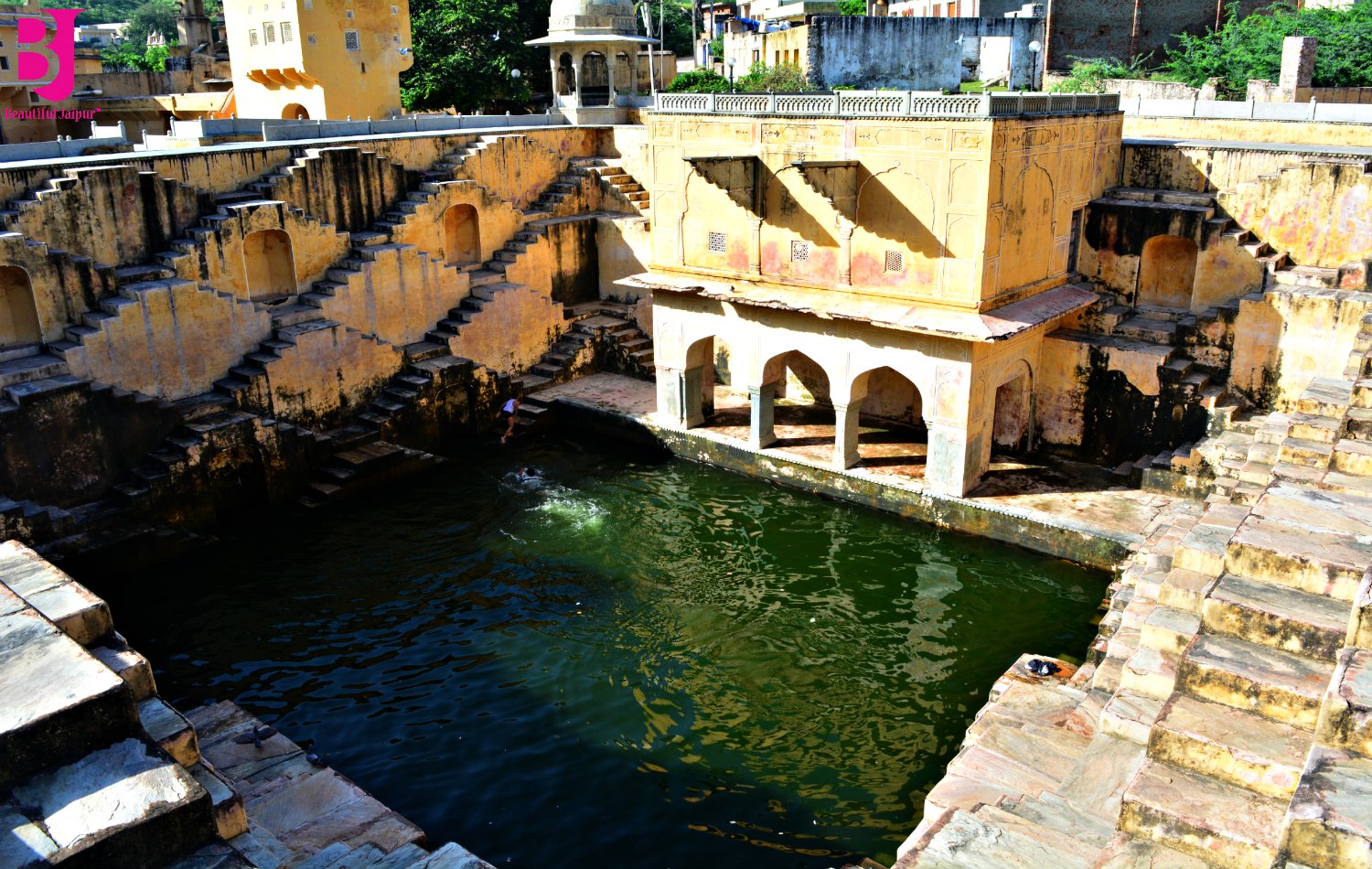
Due to its proximity to the Thar Desert, the people of ancient Jaipur depended on stepwells for water. Today, the function is a bit different. If Malaysia has waterfalls, then Jaipur has stepwells: some people still depended on this stepwell for water, whilde others come here to swim and have picnics.
4. There are temples where rats and monkeys are revered
[ingcode id=Bcgr8tjlD9b]
Jaipur is home to many interesting temples, and one of them is the Galtaji Temple, or colloquially known as the Monkey Temple due to the large number of macaque and langur monkeys living there. The Galtaji Temple is built around a natural spring that feeds seven pools in the temple complex, and Hindu pilgrims who visit this temple bathe in these pools to wash away their sins. A hop and a skip away from the monkey temple is the Sun Temple, situated on top a hill. While the Sun Temple itself is not much to look at, the view from its grounds, particularly of the sunset falling over Jaipur, is said to be very memorable.
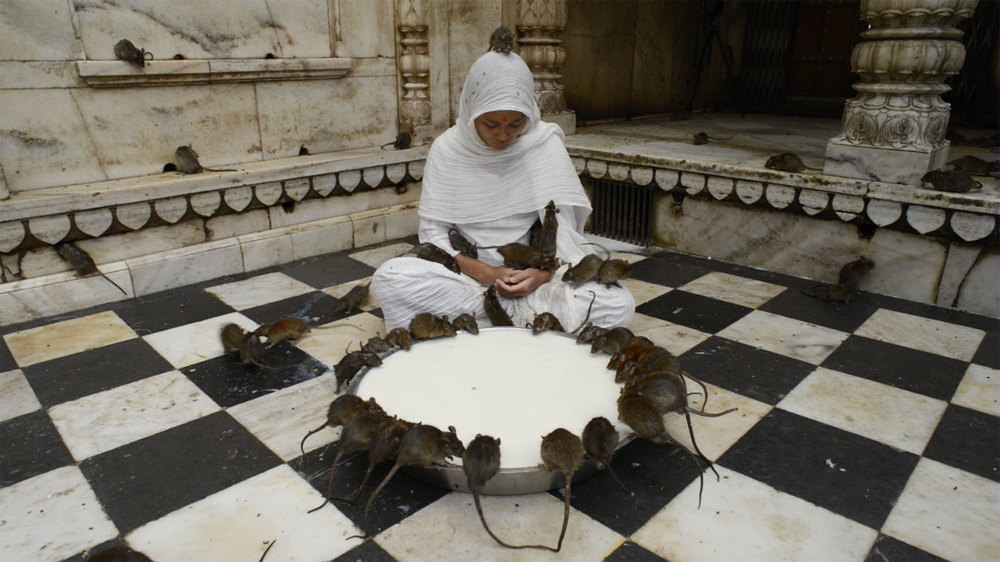
Another interesting temple is the Karni Mata temple in Jaipur, or better known as the Rat Temple. While rats may be seen as a pest by our Majlis Perbandaran, the 25,000 black rats there are revered by the worshipers of Karni Mata. Why? The traditions comes from a version of a legend that tells of an army of 20,000 soldiers who deserted battle and ran to the temple for refuge.
Despite the sin of deserting being punishable by death, the deity Karni Mata spared their lives by turning the soldiers into rats, and the soldiers repaid her her mercy by promising to serve her forever. Seeing a white rat is considered a blessing at the temple, as they are believed to be incarnations of Karni Mata herself or one of her four sons.
5. There’s a place where royal womenfolk can spy on the commoners.
[ingcode id=BcvHiiIH582]
That up there is the picture of one of Jaipur’s most famous buildings, the Hawa Mahal (Palace of Winds). It’s an extension of Jaipur’s main palace, build specially so that the women of the palace can observe the city and festivals held on the street below without being seen by people. For that, the palace had 953 small windows (or jhakoras), all decorated with intricate designs.
But the tiny, numerous windows hold another function: in the summer, when it’s hot, they move the air surrounding and inside the building, creating a pleasant stream of air, not unlike how our kampung houses have small gaps in the wall where it meets the roof. This air movement is the reason it’s called the Palace of Winds.
6. There’s a palace where the walls and ceilings are made of tiny pieces of mirrors
From the outside, the Sheesh Mahal looks like a normal, Jaipur-esque building. But when you get inside, you’ll be greeted with this:
[ingcode id=BE78GHLxRFC]
Also known as the Glass Palace of Jaipur, the Sheesh Mahal (sounds like someone complaining about a price) is a building that’s part of the Amer Fort complex. This palace is built on 40 pillars and heavily adorned with thousands of tiny mirrors, and they are placed in such a way that it is said that the light of two candles are enough to light up a whole room.
It was said that the Maharaja of Jaipur at that time, Raja Man Singh, built the palace because the queen loved to sleep in the open air, but due to security reasons she couldn’t. With the help of the tiny mirrors on the roof, the queen could sleep under thousands of stars just by lighting a candle in her chambers. So romantic weh! It was also said that the glass reflected the heat of the candles to make the room warmer, so the palace became the maharaja’s dwelling place in the winter as well.
7. There’s a submerged palace in the middle of a lake!
[ingcode id=BVHrH4VlF9D]
Looking at the picture of the Jal Mahal (Water Palace) above, one might not have guessed that it’s actually a five-storey building. Built out of a kind of red sandstone, the remaining four floors of the palace are submerged underwater, the walls holding back millions of liters of water from getting inside. Now that’s the kind of construction we need for our flood-prone areas. The Jal Mahal was originally built by Maharaja Madho Singh I in 1750, as a place for his duck-hunting party to rest and have picnics during hunts. As such, there are no specific or personal chambers inside the palace.
Besides ducks, the lake itself features an impressive array of both local and migratory birds, so bird watchers and nature photographers might find this place enjoyable. The only way to get to the palace is by boat, but recently access had been restricted due to plans to turn the palace into a restaurant. But even from far off, the Jal Mahal still makes a great subject. In fact…
Why does the word Mahal appear so often?
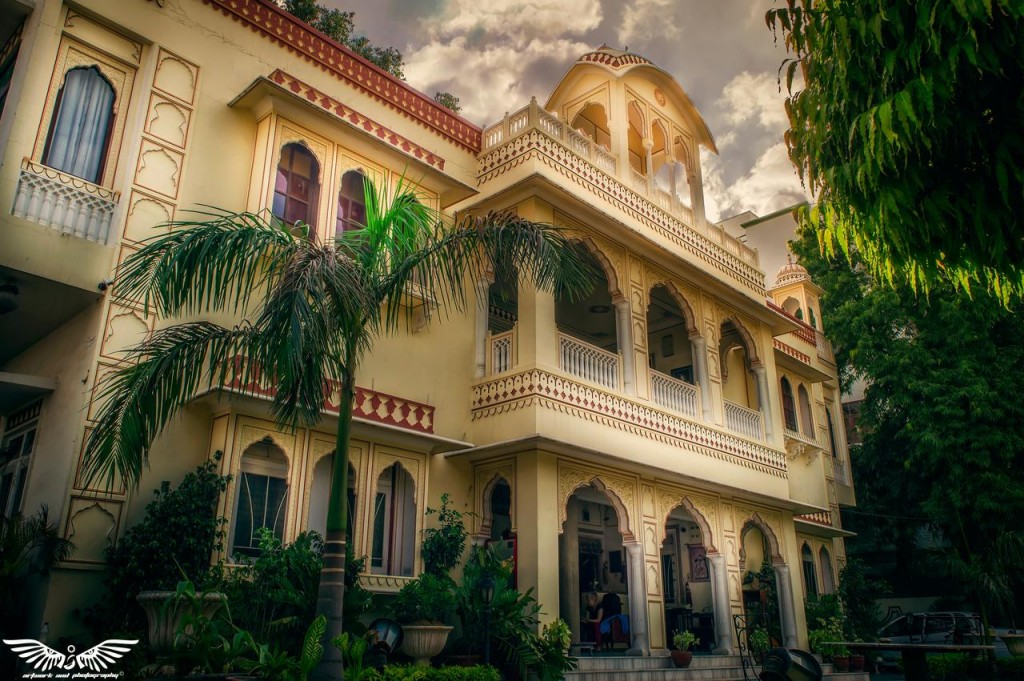
While it may seem like a lot, what we’ve covered so far in this article barely scratched the surface of what there is to see in Jaipur. On top of its rich cultural heritage, forts, castles, and scenic gardens are found throughout the city, so if you’re a photographer or a fan of beautiful architecture, this is the place to be.
The word “Mahal” actually means palace, or mansion, but contrary to its meaning here in Malaysia, beautiful hotels like the Krishna Palace above go for less than RM150 a night, and as you know, you can get there now with AirAsia X for just RM249. Save the money, buy an Instagram-worthy phone, and who knows, you might just end up on the big screen.
- 3.8KShares
- Facebook3.7K
- Twitter7
- LinkedIn17
- Email28
- WhatsApp115

